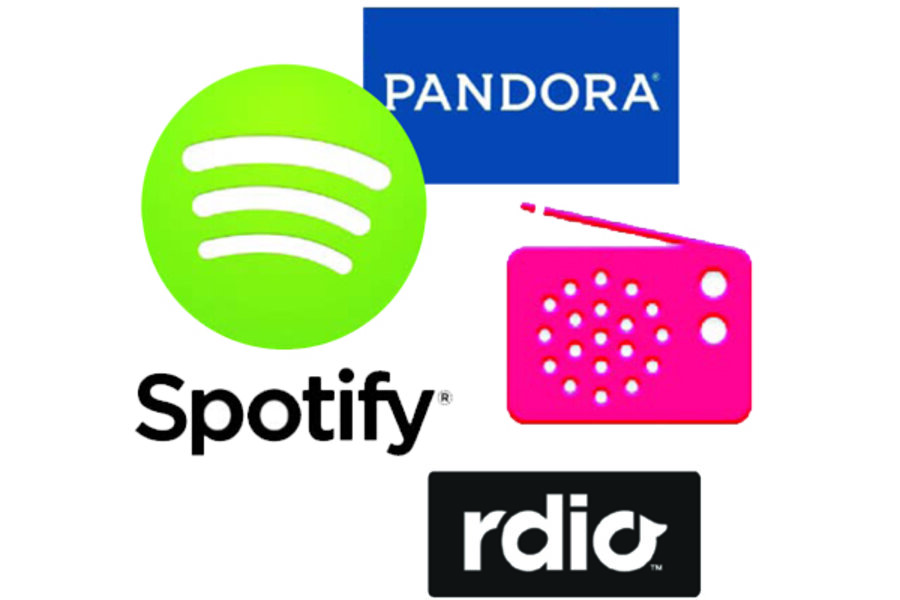Spotify, iTunes, Pandora: How music-streaming services compare
Loading...
Spotify just got a lot better. For years, the music-streaming service discriminated against certain devices. Desktops and laptops could play any song from Spotify's library of more than 20 million tracks, free of charge. Its phone and tablet applications, however, felt more like radio stations. Listeners could choose a genre, but had little input on what the digital DJ played next.
An update, out now for iPhone, iPad, and Android, unlocks many of the on-demand privileges originally withheld from mobile devices.
How does the new Spotify stack up to its competitors? Here's a quick comparison of five of the best streaming services.
Spotify: Even before the update, Spotify seemed almost too good to be legal. People may comb through its massive catalog of songs, play any track at any time, build and share playlists with friends, and do so without paying a dime.
With the latest version, tablet users may now access the same ad-supported service as those on Macs and PCs. Apple and Android phones still have a slightly diminished service: Users may listen to playlists that they or their friends create, but the mobile app shuffles up the order of the songs. If a playlist has only one or two songs, Spotify will automatically flesh out the selection with similar-sounding tracks.
You can pay $4.99 a month to remove the ad interruptions, or $9.99 a month for higher-quality recordings and the ability to download songs for off-line play.
Pandora: While Spotify aims to be the most comprehensive jukebox on the planet, Pandora focuses on helping people discover new music.
You can't tell Pandora to queue up a specific track. Instead, you tell the service what you'd like to hear, and it will play songs that match that vibe. You can further tailor its selections by rating each song with a thumbs up or thumbs down.
Pandora's sharp-eared algorithms disguise the fact that it has a relatively thin catalog of songs – fewer than 1 million by recent count. That's about 4 percent of the iTunes Radio library. Pandora has most hit songs, but indie lovers may need to look elsewhere.
What Pandora lacks in depth, it makes up for in ubiquity. The app runs on Mac, PC, Android, iPhone, BlackBerry, Windows Phone, and even some cars.
Google Play Music All Access: This service recognizes that most music fans already have a sizable collection of songs. When you sign up for Music All Access, Google scans your computer to see which tracks you own. It will upload as many as 20,000 songs to a "digital locker" that you may then access from any computer and some mobile devices.
For $9.99 a month, Google unlocks a Spotify-style on-demand jukebox with access to 19 million songs.
iTunes Radio: Like Pandora, Apple's streaming service creates personalized music playlists. Pick a song or artist, and it serves up similar tunes with a few ads thrown in. A subscription to iTunes Match, Apple's $24.99-a-year digital locker service, will yank the advertising.
Apple also takes advantage of its close relationship with record companies. It invites popular musicians and DJs to curate featured playlists. And iTunes Radio regularly gets exclusive access to albums before they go on sale.
Rdio: While Rdio's features seem right in line with its competition, the plucky music service excels in one aspect: design. Its iPhone, Android, and Windows Phone apps are clean, sleek, and intuitive.
The service isn't bad either, with 20 million songs available on-demand, free of charge for six months. After the trial period, listeners may continue to create Pandora-style stations for free or chip in $9.99 a month for the full catalog. Rdio also appeals to families by offering 20 percent off a second subscription and 50 percent off each subsequent account.
Upstarts: 2014 could be a crowded year for music services. Several news outlets have reported that more than 10 companies plan to introduce or revamp their streaming programs, including Beats Electronics, the team behind the high-end headphones.
For more on how technology intersects daily life, follow Chris on Twitter @venturenaut.







